21 Beautiful Temples of Indonesia
Indonesia has some stunning temples that you’ll love visiting! If you want to look beyond the tourist areas and delve a bit deeper into the local culture, the temples of Indonesia are the perfect place to spend some time.
Set amidst stunning landscapes with lakes, mountains, rice fields, and panoramic coastal views, Indonesian temples offer beautiful, peaceful surroundings along with some wonderful photo opportunities.
There are more than 10,000 temples in Bali alone and some of the most famous Indonesian temples can be found in Central Java.
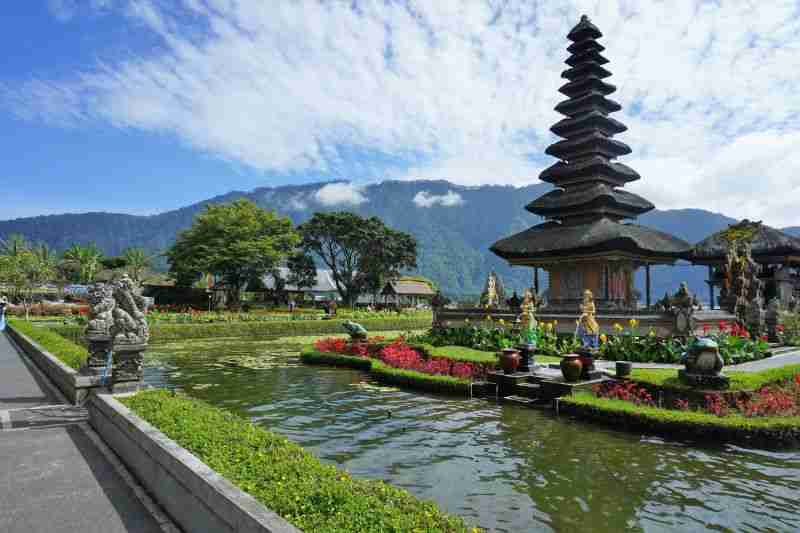
What is the best Indonesian Temple to visit?
Borobudur is the largest Buddhist temple in the world and is UNESCO world heritage listed. Located in Central Java Borobudur it’s one of the most majestic Indonesian temples to visit.
Which is the biggest Hindu temple in Indonesia?
Prambanan Temple is the biggest of all the Hindu temples of Indonesia and it’s also the oldest. The Prambanan temple complex is UNESCO World Heritage-listed and can be found near Yogyakarta in Central Java, only 50 kilometres from Borobudur.
What is the holiest temple in Bali?
Besakih Great Temple is the most sacred and most important of the Hindu temples in Bali. Known as the “mother temple” and located in the heart of Bali, Besakih is a beautiful shrine to visit. And if you go on a festival day you’ll get a sneak peek into the local culture.
Which temple is most photographed in Bali?
Ulun Danu Beratan Temple is the most photographed temple in Bali with a truly stunning location beside a beautiful lake in central Bali. A backdrop of mountains shrouded in wispy clouds makes this Indonesian temple incredibly photogenic and very popular with visitors.
The Balinese temples at Tana Lot, Uluwatu and Lempuyang are also favoured by photographers for their gorgeous locations and stunning views.
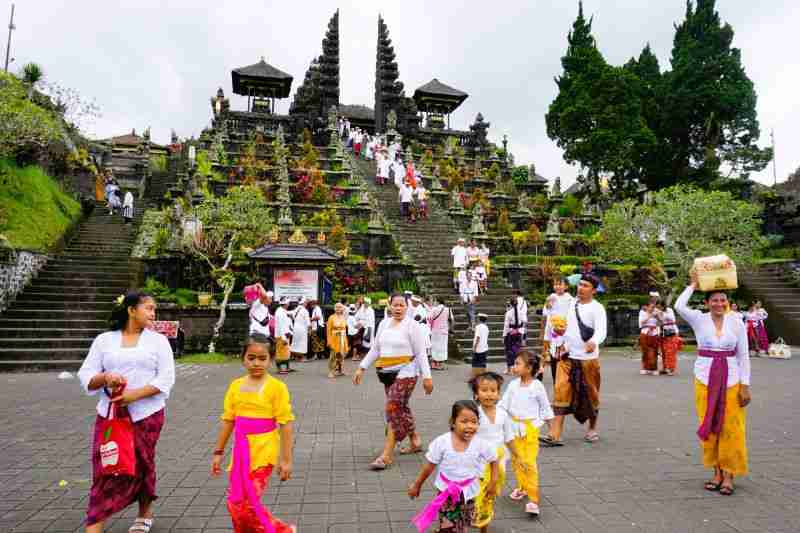
*Disclosure* – Some of the links on this page are affiliate links which means I may make a small commission on sales that result from clicks on those links. This does not cost you any extra and helps to keep this website running. Thank you for your support!

Tip for visiting Indonesian Temples
The Temples of Indonesia are sacred places and there are some things you should know before you visit. Below are some common rules and customs that should be observed while you’re there.
- At Indonesian Temples, dressing modestly is a sign of respect for the local culture and traditions. Make sure your shoulders and knees are covered whenever you visit an Indonesian temple.
- Wearing a sarong and sash is required for entry to Balinese temples and they are often supplied when you buy your ticket.
- An entrance fee is charged at most Indonesian temples so look out for the ticket office, usually marked “Loket”.
- The Temples of Indonesia are sacred places so visit them respectfully and quietly, especially when people are praying.
- Some areas of the temple are reserved for prayer or religious ceremonies and are closed to visitors. These are usually marked so please observe the signs.
- Women who are pregnant or menstruating and people who are dying are not allowed to enter Indonesian Temples. They are thought to be unclean.
- No kissing – Public displays of affection are not allowed in the Temples of Indonesia.
The Beautiful Temples of Indonesia
I loved visiting the stunning Temples of Indonesia and I’ve compiled a list of my favourites. I think you’ll love these Indonesian Temples too. At the top of the list is Borobudur on the island of Java.
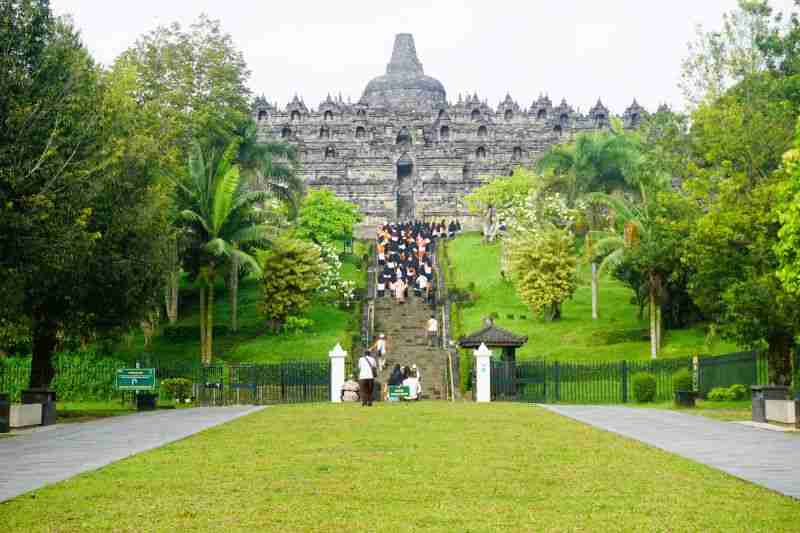
Borobudur Temple
Of all the beautiful temples in Indonesia, Borobudur is the most famous. Majestic Borobudur Temple has UNESCO World Heritage status. It’s the world’s largest Buddhist Temple and one of the most important archeological sites in South East Asia rivalling Angkor Wat in Cambodia and the temples of Bagan in Myanmar.
Built in the 8th and 9th centuries, the magnificent Borobudur Temple is a Mahayana Buddhist shrine and a Buddhist pilgrimage site. People come from all over the world to see Borobudur and there are often crowds of visitors.
The Borobudur temple grounds are huge, leafy and green and there’s a small museum near the exit. You can expect to find a lot of hawkers and market stalls at the temple entrance and exit all trying to tempt you to spend your money.
Although Borobudur is a Buddhist shrine, the Island of Java is predominantly Muslim and the call to prayer rings out regularly over loudspeakers throughout the day starting at 4 am.
Bus loads of junior high school children were visiting when I was there and they were very friendly, wanting to say hello, practise their English and take a photo. At first, this was fun but it became a bit exhausting after a while.
Note: Since covid restrictions began in 2020, the upper levels of Borobudur Temple have been closed to visitors. At the time of writing, it was only possible to see the temple from the ground level and the temple grounds were closed at sunrise, sunset and on Mondays.
Where is Borobudur Temple located?
Borobudur Temple is located in Central Java, around 40 kilometres and just over an hour by car from Yogyakarta. From Yogyakarta’s Kulon Progo International Airport, it takes around 1.5 hours to drive to Borobudur.
A half-day Borobudur guided tour from Yogyakarta is an easy way to see the most famous temple in Indonesia at Borobudur and this tour offers a convenient hotel pickup and dropoff. Explore one of the largest Buddhist temples in the world and learn all about the construction and history of this ancient sacred site.
Tips for visiting Borobudur Temple
- Allow around 1-2 hours to explore Borobudur Temple and its grounds.
- Borobudur opening hours were 7 am – 4 pm at the time of writing.
- Buy a temple pass for both Prambanan & Borobudur and you’ll save money on your ticket. The pass is valid for 2 consecutive days and costs US$45
- Indonesian Temples are often closed on Mondays
- The best time of year to visit Borobudur is from May to October during the dry season. But having said that, I was there in January at the height of the wet season and had a great time.
Indonesia is a year-round destination. Visiting Java and Bali in the wet season is worthwhile but travelling to Java and Bali in July, during the dry season is even better. But if you’re looking for the best weather from November and March, why not go to Thailand instead? Learn more about Bali vs Thailand and how these popular Southeast Asian destinations compare.
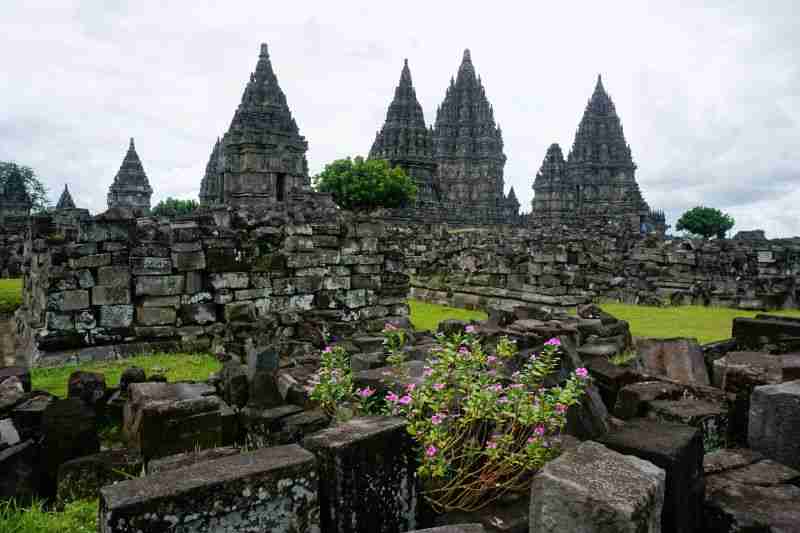
Prambanan Temple
Of all the Hindu Temples of Indonesia, Prambanan is the largest and the oldest. Known locally as Candi Prambanan, the ancient Indonesian Temple was built by the rulers of the Mataram Kingdom in Central Java from the 8th to the 10th century. The Prambanan temple complex contains 240 temples and is UNESCO world heritage listed. It’s one of the most impressive religious sites in Indonesia.
Prambanan is an ancient Hindu shrine made up of vertical towers, decorated with stone carvings. The carvings are detailed representations of the scriptures and tell the story of the Ramayana.
Note: Candi Prambanan temple could only be seen from ground level and access to the temples themselves was off-limits at the time of writing.
Where is Prambanan Temple located?
The Prambanan Temple complex is located in Yogyakarta, on the island of Java, around 17 kilometres northeast of the city centre and just over 50 kilometres from Borobudur. With a tour or a private car, both of these stunning Indonesian Temples can be visited in a day.
TIP: It’s easy and time-effective to visit Prambanan Temple on a day trip from Yogyakarta and see Borobudur, the most famous temple in Indonesia, on the same day.
How to Get to Prambanan
A Grab or Gojek taxi will take you there from Yogyakarta in about half an hour
If you’re on a tight budget, bus 1A leaves from Jalan Malioboro in Yogyakarta and it takes around an hour to get there by bus.
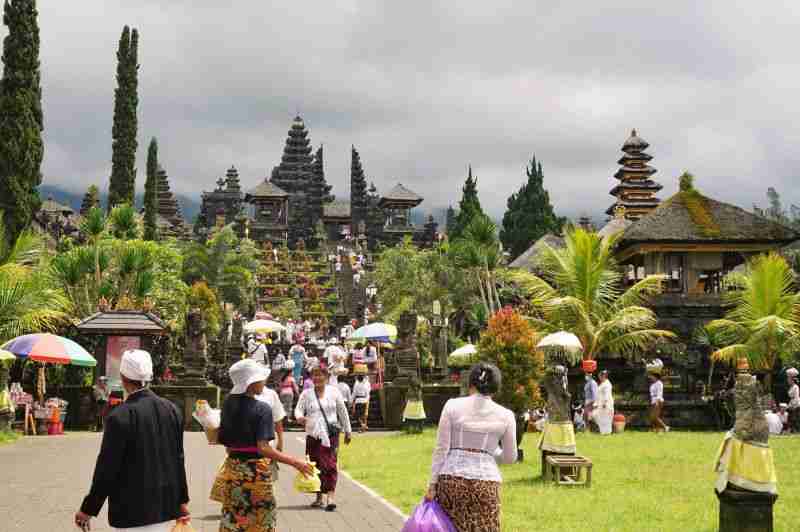
Pura Besakih Great Temple
Pura Besakih is one of the most famous temples in Indonesia and one of the most sacred Hindu temples in Bali. Known as the “mother temple”, Besakih is also the largest, most important and holiest of all Balinese Temples and it has an ancient history, dating back to the 10th century AD.
The Besakih Temple complex consists of more than 80 temples. Many are closed to the public, but I enjoyed strolling through the complex, peaking through the gates and over the walls at the prayer rituals happening inside. The main shrine at Besakih is Penataran Agung Temple and there are seven levels within the temple with statues of three main gods, Lord Vishnu, Brahma, and Shiva.
With broody Mount Agung as a backdrop, there are some lovely opportunities to enjoy the views and the peaceful surroundings at Besakih Great Temple. I was lucky enough to visit on a festival day and the compound was overflowing with worshippers dressed in colourful clothing wearing their best sarong and sash and carrying baskets of offerings for the Gods and food for the family.
The temples in Bali are places where families go together to pray and enjoy a meal in the shelters near the prayer areas within the temple complex. It’s a fun, social time and the atmosphere at Besakih was vibrant and festive.
TIP: Visit Besakih Temple on a day tour and you’ll see the “mother temple” of Bali along with the famous Gates of Heaven at Lempuyang Temple on the same day.
I wandered to the top of the Besakih temple complex and met a Hindu priest dressed in white robes. He invited me into the highest temple in the complex to pray. I was given a small basket of flowers to use as an offering for the gods. the priest prayed with me, sprinkled me with holy water and blessed my crown & throat chakras.
The energy of this Balinese Temple was powerful and a bit overwhelming. As I sat cross-legged on the stone floor, I found tears streaming down my cheeks. After the prayers, I was asked to make a donation to the temple, and I was happy to do this.
TIP: Guides wait near the entrance of Indonesian Temples. They are usually men who will strike up a conversation and offer to show you around. Besakih Temple is easy to visit without a guide but if you do want a guide, it’s best to set a price before you set out. Even though you’ll be told their services are free, you’ll be asked for a donation afterwards.
Where is Besakih Temple located?
Besakih Temple is located in eastern Bali in the village of Besakih on the side of Mount Agung.
I visited on a day trip from Tirta Gangga and it took around an hour to get there on the back of a motorbike on some very bumpy and windy mountain roads. Because it was a festival day, there was a lot of traffic. On the road, there were many open trucks packed with local people in temple dress on their way to or from Besakih.
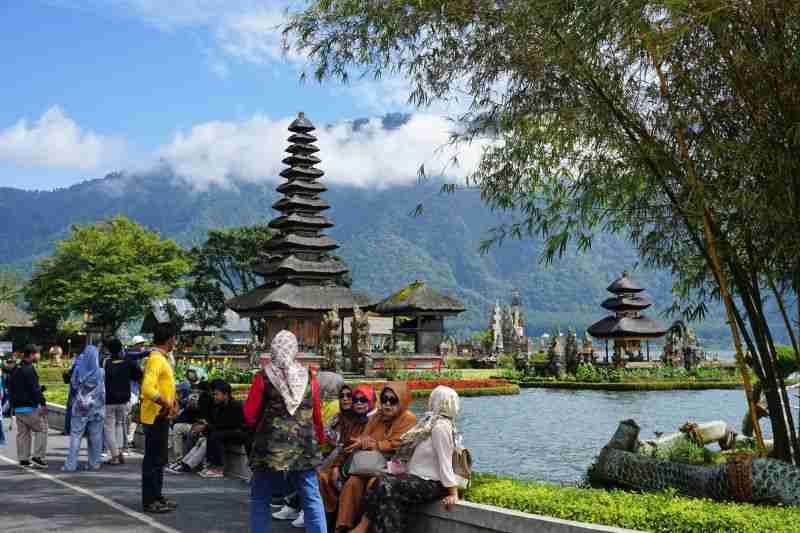
Ulun Danu Beratan Temple
This lovely 17th-century Indonesian Temple has a picturesque location in Bali beside Lake Beratan. Surrounded by mountains, Ulun Danu Beratan (or Bratan) Temple is another famous temple in Indonesia and one of Bali’s 9 directional temples. The image of the Beratan temple can be found on the Indonesian Rp 50,000 note and it’s one of the most important Temples in Bali.
This lovely Hindu Temple is a shrine to Brahma, Vishnu and Shiva and the lake Goddess Dewi Danu. The compound consists of 5 Hindu temples and a Buddhist Stupa.
The lakeside setting and beautiful gardens make Ulun Danu Beratan one of the most popular Temples in Bali for visitors. There are many scenic places to photograph but the best photo spot is near Pura Lingga Petak, a small temple built on an island on the lake with wispy clouds and mountains as a backdrop.
There are many more photo opportunities in the gorgeous gardens and it’s a favourite spot for wedding photos. Try to visit early in the day to avoid the tourist crowds.
You can expect to see lots of people vying for the best photo spots and busloads of Indonesian tourists visiting from Java as you wander through the grounds.
See Beratan Temple on a private full-day guided tour of Bali’s most famous UNESCO World Heritage Sites, including the iconic temple of Pura Ulun Danu Beratan on the shores of Lake Beratan.
Where is Ulun Danu Beratan Temple?
Beraton Temple is in Candikuning village on the banks of Lake Beratan (Bratan) in Bedegul in the heart of Bali, around 50km north of Denpasar city on the main road to Singajara and Munduk.
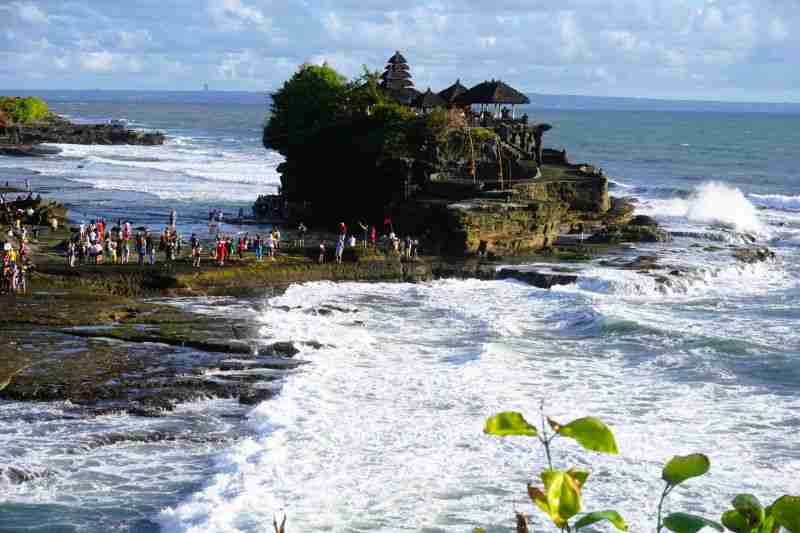
Tanah Lot
Of all the Temples in Bali, Tanah Lot is a favourite with visitors. Famous for its stunning coastal setting, Tanah Lot is simply a lovely place to be at sunset.
The small Hindu Temple is located on a tiny island just offshore and it’s accessible only at low tide. Huge waves crash against the rock platform around the temple and they are mesmerising to watch. In the local language, Tanah Lot means “land in the sea” and the Balinese people have been worshipping the sea gods for centuries in this atmospheric 16th Century Indonesian Temple.
At Tanah Lot, there are lovely gardens and many scenic spots to pause, take photos and enjoy the panoramic views. Along the cliff edge, on either side of the temple, there are restaurants where you can stop for a drink or a meal and enjoy the stunning coastal views. Or stroll through the gardens and relax on the lawn on the temple grounds.
When you arrive at Tanah Lot, you’ll pass through a huge market selling clothing, hats, jewellery and other souvenirs. On the pathway, there are hawkers selling impressive homemade kites and there are lots of photographers happy to take your photo for a fee.
TIP: You can easily visit Tanah Lot on a small group tour. Discover Bali’s sacred temples, mountain villages and local markets on this private, full-day cultural tour. Enjoy magnificent views of Goa Gajah Temple and Gunung Kawi Temple. Admire the beautiful sunset at Tanah Lot, a very special location.
A traditional Balinese dance performance takes place every evening at 6 pm at Tanah Lot and it’s a colourful introduction to traditional Balinese culture. The Temple itself is off-limits for tourists so you won’t need to wear a sarong but dressing modestly is a sign of respect for the local culture and traditions.
Where is Tanah Lot?
Tanah Lot Temple is located in Tabanan in Bali, around 20 km northwest of Denpasar City. It’s just a few kilometres away from Canggu and it takes about 20 minutes to drive there from Canggu on a motorbike.
TIP: Grab and Gojek operate in the area but the Bali taxi mafia tries to prevent them from operating around Tanah Lot. I found it easy enough to pick up a new Grab or Gojek ride from the road just outside the temple entrance gate for the return trip to Canggu.
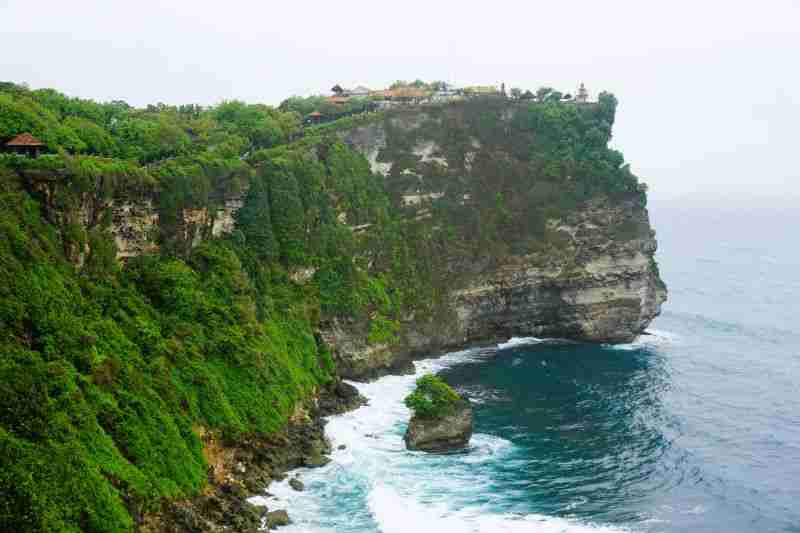
Pura Luhur Uluwatu Temple
A small Indonesian Temple perched on the top of tall sea cliffs, Pura Luhur Uluwatu is a spiritual pillar of Bali and one of the 9 directional temples that protect the island from evil spirits. This ancient Hindu shrine was built in the 11th century and is a famous temple in Indonesia and one of the most important temples in Bali.
Perched on a clifftop with crashing waves below, the Uluwatu Temple offers stunning ocean views and a dramatic coastal landscape.
It’s very popular with visitors at sunset as the temple gardens deliver panoramic views over the ocean as the sun disappears at the end of the day.
There are monkeys on the temple grounds that are fun to watch but they can also be mischievous. Don’t take food with you and hold onto your hat, sunglasses and earrings if they become inquisitive.
TIP: A traditional Kecak and Fire dance performance takes place in the Uluwatu Temple grounds each evening.
Where is Uluwatu Temple?
Uluwatu temple is located in Pecatu Village on the Bukit peninsula on Bali’s southern tip. It’s about 23 kilometres south of Kuta.
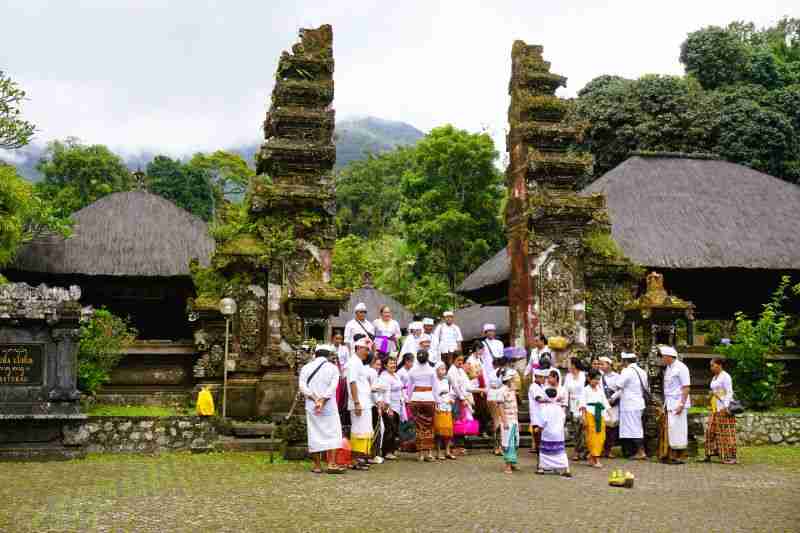
Pura Luhur Batukaru Temple
One of the most atmospheric temples in Bali, Pura Luhur Batukaru is one of Bali’s 9 directional temples and a place of pilgrimage. It’s a very spiritual place located in the forests on the southern slopes of Gunung Batukaru, Bali’s second-tallest mountain. The holy mountain peak is 2276 metres above sea level and Batukaru Temple is surrounded by forests with a cool, misty atmosphere.
Batukaru Temple is dedicated to the mountain guardian spirit Maha Dewa, and there are alters for worshipping the spirits of the nearby lakes, Buyan, Beraton and Tambling.
There were only a handful of tourists visiting when I was there and this made Batukaru Temple a lovely place to explore. It’s an atmospheric sanctuary frequented mostly by worshippers wearing traditional Balinese temple clothes.
As I walked quietly around the temple grounds, I could hear people praying. A monk was chanting and prayer bells were ringing out. The sounds of the forest, cicadas and bird calls added to the peaceful atmosphere of this holy Indonesian Temple.
Although the inner parts of the temple are off-limits to visitors, I could see people washing in the holy water, praying and offering food and flowers to the mountain spirit. There’s a large lake near the holy spring where you can feed the fish, a popular pastime in Balinese Temples.
Where is Batukaru Temple?
Batukaru Temple is located in the village of Wongaya Gede, 37 kilometres from Ubud and 45km north of Seminyak. It’s also close to the stunning UNESCO World Heritage-listed Jatiluwih rice terraces. So when you visit Batukaru, take some time to stroll through the rice fields and enjoy the stunning landscapes that Bali is so famous for.
Pura Luhur Lempuyang Temple
Pura Luhur Lempuyang is a well-known Indonesian temple and one of the most important temples in Bali. It’s an ancient shrine built in the 11th century AD and one of the 9 directional temples that keep Bali safe from evil spirits. Lempuyang Temple is famous for the stunning Gates of Heaven which can be found in the lower section of the Temple.
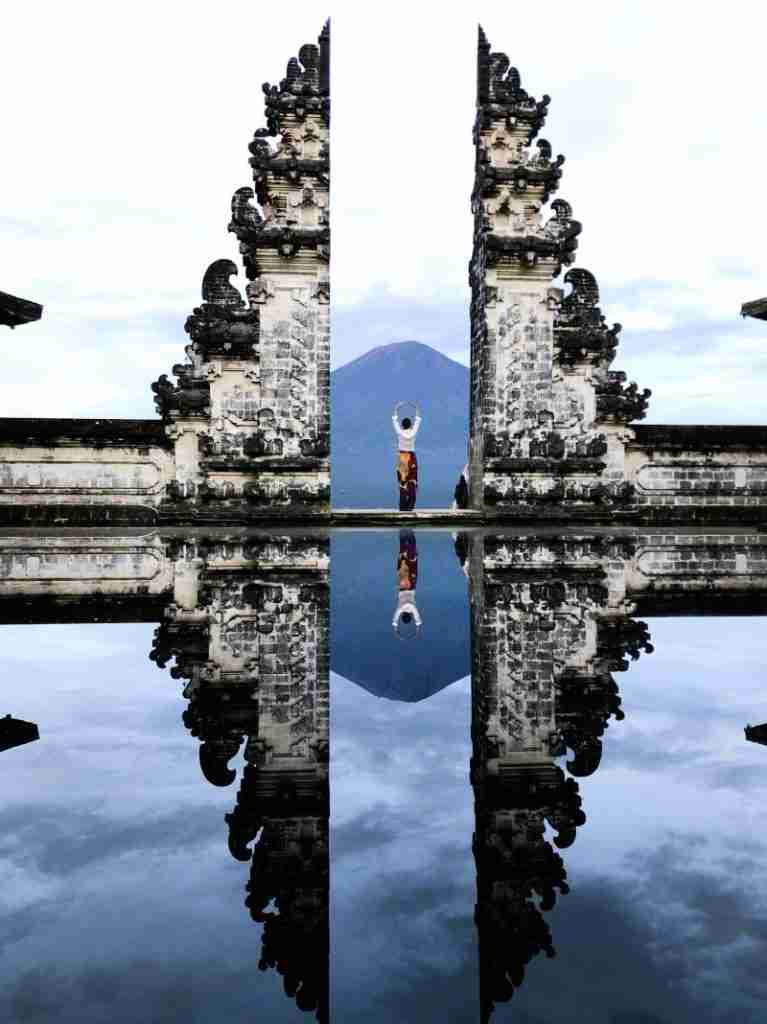
There are 7 temples within the Lempuyang Temple complex and it’s a half-hour walk from Heaven’s Gate to the second temple. It takes around 2 hours to walk up the steep path to the highest temple on the mountain where there are stunning views of rice paddies and the ocean.
Pura Luhur Lempuyang is high on the list of places to see in Bali and most people visit this sacred Indonesian temple to take a photo posing at the Gates of Heaven. The gate opens to a panoramic mountain view and the famous photo appears regularly on Instagram.
Visit Lempuyang Temple on a full-day Bali Instagram Highlights tour. Have your photo taken at the famous Gates of Heaven and see some of Bali’s most popular sites.
TIP: When you pay your entrance fee, you’ll be given a number and this is your place in the photo queue for the Gate of Heaven. You then wait for your number to be called and it can take hours. So get there early to beat the crowds of Instagrammers.
Lempuyang Temple is a lovely Indonesian Temple in a stunning location in Bali but unfortunately, it has been overrun by tourists.
The lower parts of the temple receive thousands of visitors each day and there are long queues of people waiting to have their photo taken with a reflection at the Lempuyang Gates of Heaven. But the stunning photo is manufactured using mirrors and trick photography.
If you’re wondering if it’s worth visiting the Gates of Heaven you can find out more about what it’s really like to visit Lempuyang Temple
Where is Lempuyang Temple?
Lempuyang Temple is located on Mount Lempuyang in eastern Bali. It’s around 10km and 20 minutes from Tirtagangga and can also be visited quite easily from Amed 12km away with the trip taking around 35 minutes.
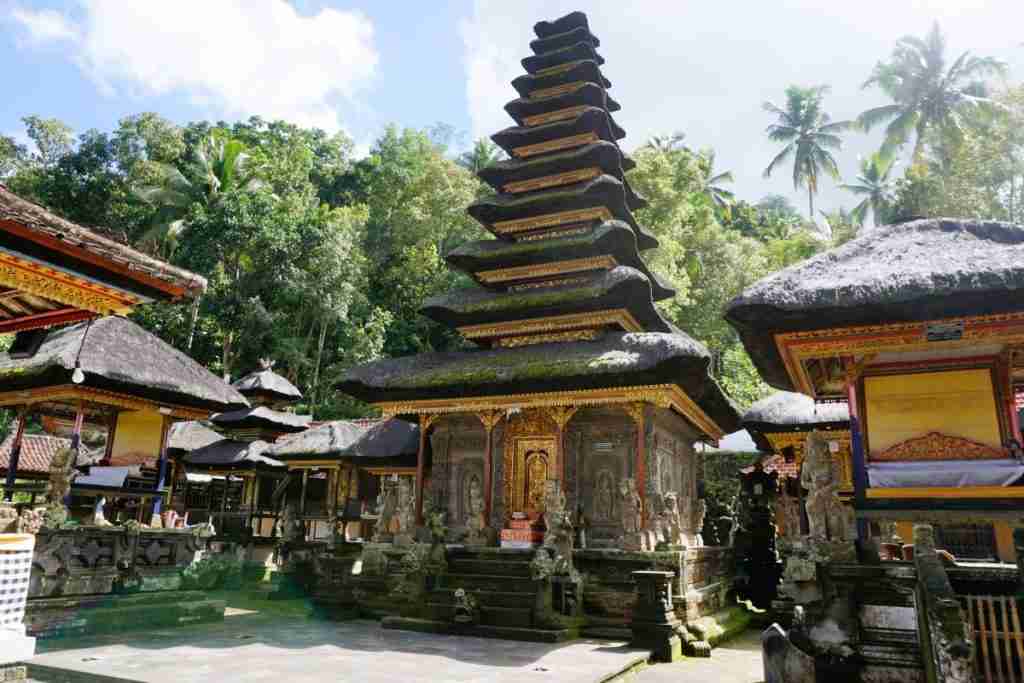
Pura Kehen
Pura Kehen is a lovely Balinese temple that sits at the bottom of a forested hillside in Bangli Regency in east Bali. Pura Kehen was once the royal temple of the Bangli Kingdom and inscriptions inside the Hindu temple indicate that it dates all the way back to the 9th century.
An impressive staircase leads upwards to the grand entrance and carved stone warriors guard the gateway. The temple has a north/south alignment with the highest part of the temple facing north.
The ancient shrine sits beneath a huge old banyan tree and the sacred tree has a massive root system that provides shelter and shade inside the sacred place.
Where is Pura Kehen?
Pura Kehen can be reached easily from Ubud and it takes just over an hour to drive there. There’s a small entrance fee of 50,000 IDR and a sarong and sash is provided at the ticket office and must be worn inside the temple.
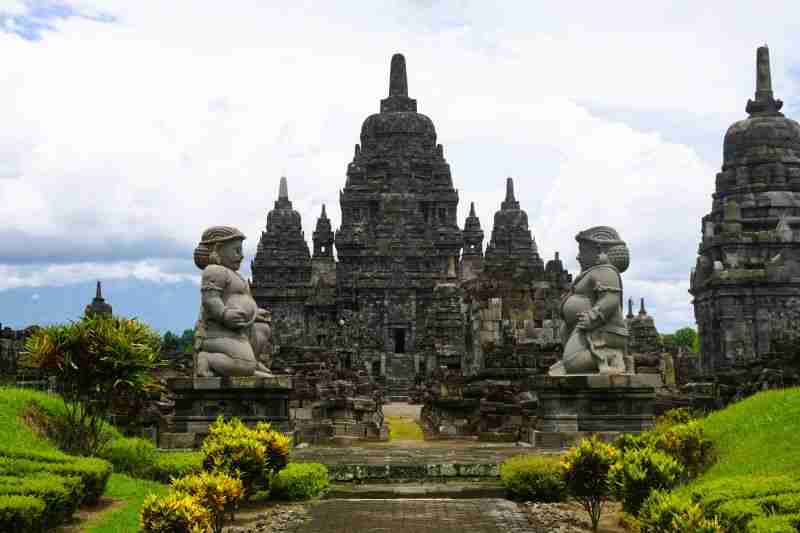
Candi Sewu
Candi Sewu is a beautiful sacred Indonesian temple located within the Prambanan Temple Complex in Central Java. The lovely Hindu ruins are about 1 kilometre from the main Prambanan temple and are much less visited. You can wander through the temple ruins and explore inside the stone shrines while at Prambanan you can only view the temples from ground level.
Candi Sewu is much quieter and more atmospheric than Prambanan and much less crowded. Although the main Prambanan temple was overflowing with tourists there were only a handful of other visitors at Candi Sewu when I was there and I enjoyed the peaceful atmosphere of the temple ruins.
Where is Candi Sewu?
To find Candi Sewu, walk through the main Prambanan temple area and follow the signs to the smaller temples. Candi Sewu is the furthest away. You can wait for a lift on a shuttle bus through the grounds or hire a bike. But I enjoyed walking through the shaded grounds and found places to rest along the way. I enjoyed the serenity of the gardens away from the crowds of visitors in other parts of the complex.
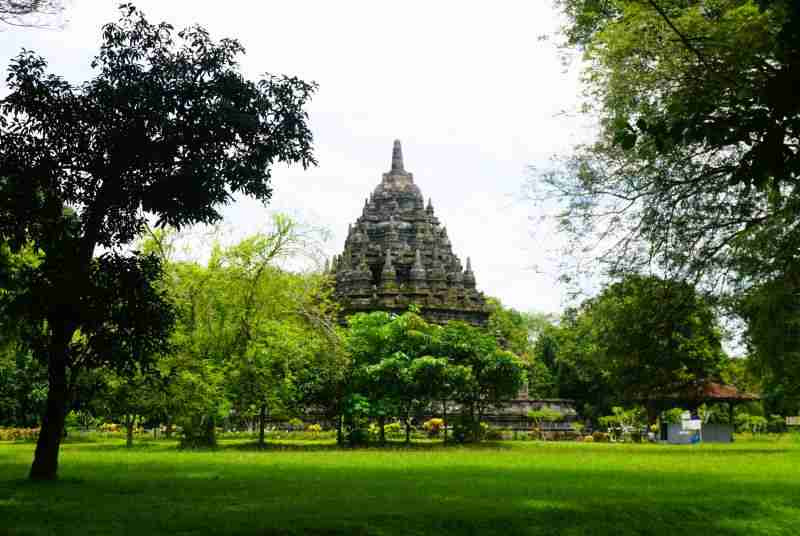
Candi Lumbung
Candi Lumbung is a smaller Indonesian Temple located within the Prambanan Compound. You’ll pass the Lumbung temple as you walk through the grounds of Prambanan towards Candi Sewu.
Candi Bubra
Also located within the Prambanan temple complex, you’ll find Candi Bubra as you walk towards Sewu Temple. Just follow the signs.
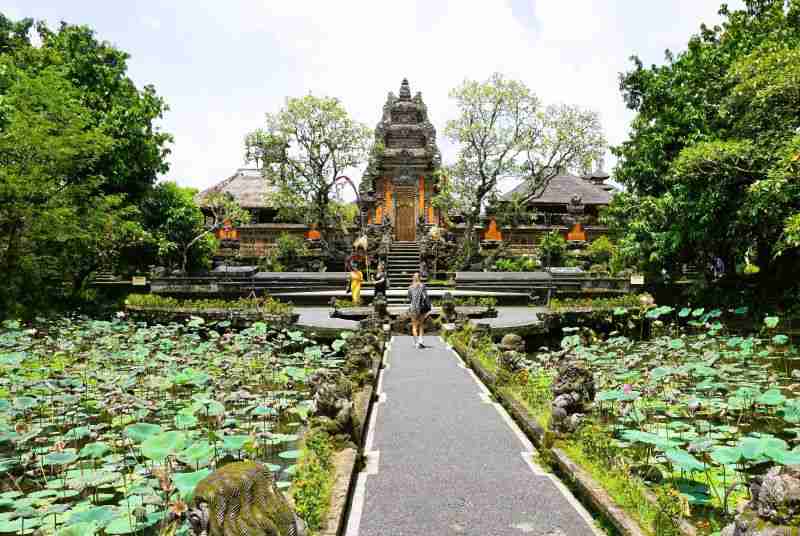
Pura Taman Sarasvati
Pura Taman Sarasvati is a lovely Indonesian Temple in Ubud, the cultural centre of Bali. This relatively new temple was built in 1952 and honours the goddess of knowledge, learning and art, Dewi Sarasvati.
A large water garden in front of the temple makes this sacred place very photogenic. Two large lily ponds on either side of a raised pathway lead visitors to the main entrance of the temple and the shrine itself is ornate and decorated with sacred carvings in the stonework. Inside the Balinese temple, there are several statues of the goddess Sarasvati and the devil.
TIP: A traditional dance performance takes place every evening near the lotus pond just outside the ornately carved Balinese temple gates. Tickets are sold at the gate and cost 100,000 IDR
Where is the Taman Sarasvati Temple?
This beautiful Indonesian temple is located in Central Ubud. Pura Taman Sarasvati is easy to find when you wander along the main street, Jalan Raya Ubud, and is accessible from a sidestreet, Jalan Kajeng. The Sarasvati Temple sits just behind Café Lotus which overlooks the lily ponds.
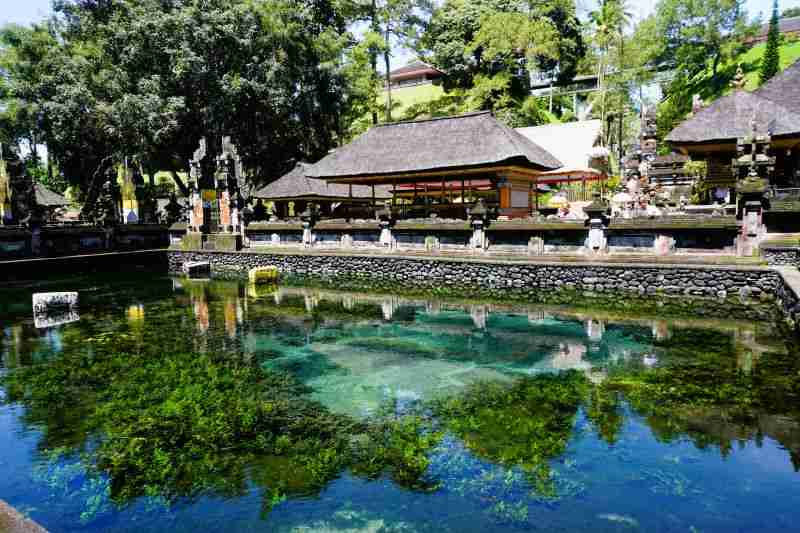
Tirta Empul
Tirta Empul is a famous Indonesian Temple built around a holy spring. Inside the temple complex, there are bathing structures and you can see the holy spring water bubbling up from underneath the ground in the temple pools.
A highlight of visiting Tirta Empul is watching the pilgrims washing in the holy water. The Hindu purification ritual takes place before prayers and making offerings to the Gods.
The popular Balinese water temple is often overflowing with visitors. Busloads of tourists come to see Tirta Empul Temple in Bali and it can be crowded with tourists.
An entry fee is charged, and a sarong and sash must be worn while you are inside the temple grounds.
Where is Tirta Empul Temple?
Tirta Empul is located near the town of Tampaksiring around 15 kilometres from Ubud.
TIP: The drive to Tirta Empul from Ubud takes around half an hour and can be combined with a visit to Gunung Kawi Sebatu, a charming, lesser-known Water Temple. Also nearby are the lovely Tegalalang Rice fields.
Gunung Kawi Sebatu Temple
Just outside Ubud is another beautiful Balinese Temple Gunung Kawi Sebatu. This pretty water temple is built around a holy spring and has a beautiful garden. In the centre is a large pond with fish, tortoises and ducks waiting to be fed.
The temple itself is small and there’s a section for bathing in the fresh spring water. It’s a lovely place to relax and enjoy the peaceful atmosphere.
There’s an entry fee and wearing a sarong and sash is required to visit.
Where is Sebatu Temple?
Gunung Kawi Sebatu can be found in Sebatu village, about 14 km from Ubud. The drive takes around half an hour and passes through the Tegalalang rice fields.
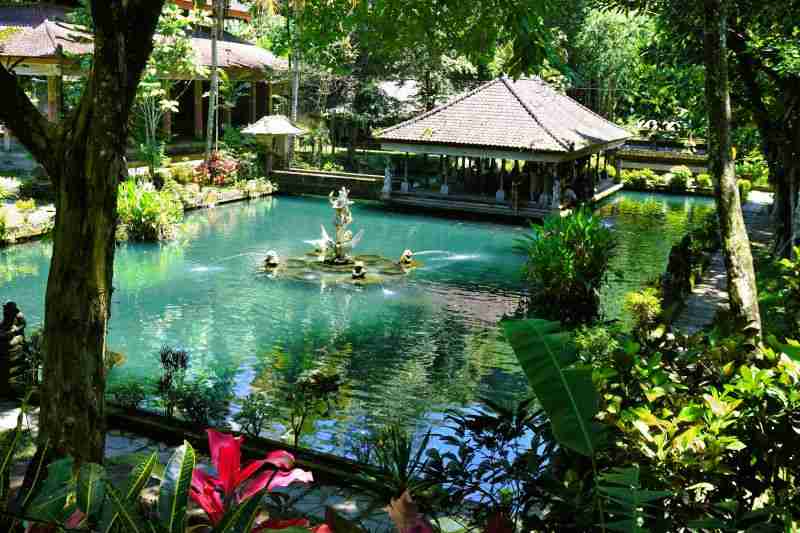
Candi Sukuh
Candi Sukuh is a small but delightful Hindu temple in a lovely setting on the side of a mountain overlooking a green rural landscape of rice paddies and villages in Central Java. From the temple grounds, there are sweeping views of the valley and the mountain, Gunung Lawu.
This small Indonesian temple dates back to the 15th century and the Majapahit Kingdom in Java. Candi Sukuh consists of a small stone pyramid in a lovely garden. There are steep stairs that you can climb to a platform at the top of the pyramid. The temple is made from rough-hewn stone and there are carved figures at the base of the pyramid.
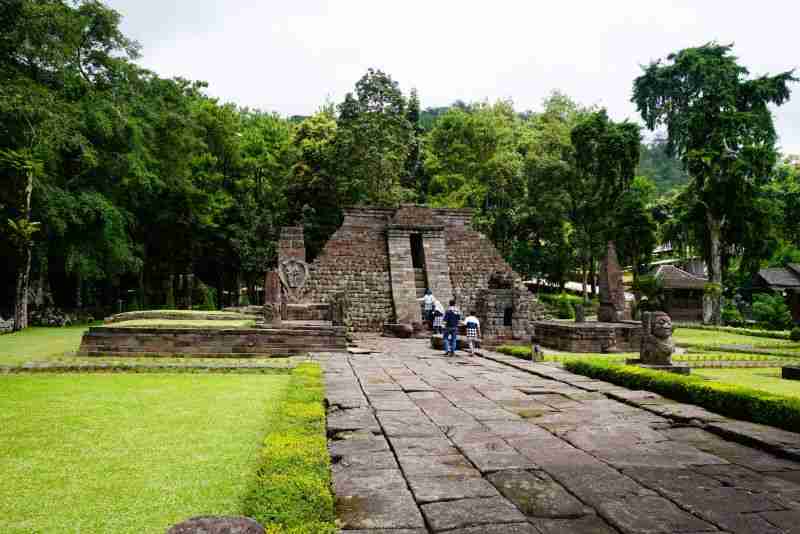
Where is Candi Sukuh located?
Candi Sukuh sits on the slopes of Mount Lawu in Central Java, about 40 kilometres from Solo (Surakarta).
To get there, I took a Grab car from Solo, and the trip took around 1.5 hours each way. The narrow, windy country roads can be very busy on weekends as the area is a popular city escape for locals. The Parang Nja waterfall is nearby and the ruins of another ancient Indonesian temple, Candi Cetho, are further up the mountain.
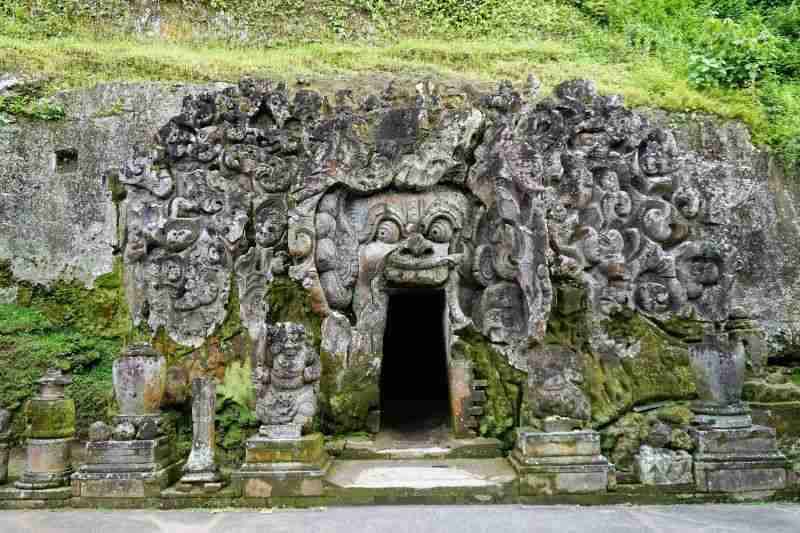
Goa Gaja Temple
The Goa Gaja Temple and Elephant Cave is an archeological site on the outskirts of Ubud, the cultural centre of Bali.
Inside the Goa Gaja complex, the carved stone façade of the Elephant Cave Temple draws attention to the entrance of the cave. And inside there’s a passageway that leads to a larger cave hollowed out of the rock.
The temple complex at Goa Gaja has both Hindu and Buddhist shrines and in front of the cave there are cleansing baths. A paved pathway leads through a lush green valley to a stream and a waterfall. Amongst the roots of a huge old tree is a Buddhist altar and, for a donation, you can be blessed by a temple guardian. The blessing includes the recitation of prayers, a flower behind the ear and a sprinkling of holy water.
Where is Goa Gaja Temple?
The Goa Gaja Temple is located in Bedulu village, 6 kilometres from central Ubud.
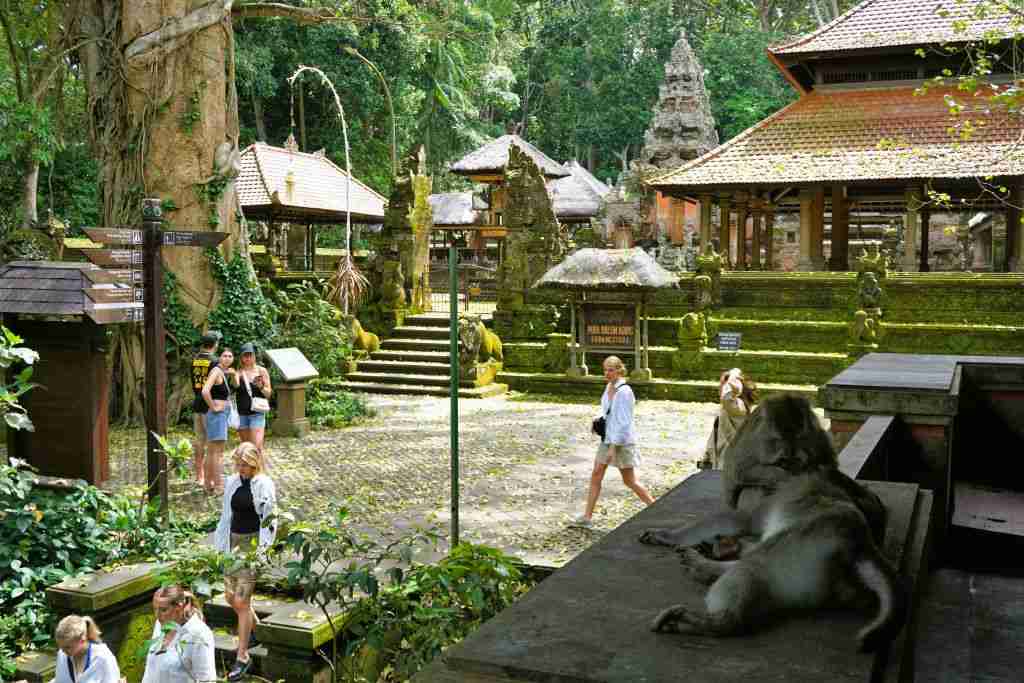
Pura Dalem Agung Padangtegal Temple
Pura Dalem Agung Padangtegal Temple lies inside the famous Ubud Monkey Forest and mischievous monkeys roam wild around the sacred shrine. The Padangtagal temple is one of many Balinese Temples in Central Ubud and one of three inside the Monkey Forest.
This ancient Hindu Sanctuary was built in the 14th century and the temple is reserved for prayers and closed to other visitors. But the lovely moss-covered stonework of the shrine adds a peaceful ambience to the often crowded monkey forest.
Shaded by tall trees and surrounded by leafy green foliage, this temple is one that many visitors will come across. The main attraction in the forest is the monkeys. Ubud’s Monkey Forest is home to around 700 long-tailed macaques and they can be quite mischievous. There are more monkeys here than the forest can support, and although they are regularly fed, the monkeys are always looking for food.
Wandering through the forest, monkeys jumped on my back several times and tried to undo the zip of my backpack. There was no food in the bag, but these monkeys were hungry and can sometimes be quite aggressive.
Where is the Padangtagal Temple located?
The Padangtegal Temple can be found inside the Monkey Forest in Central Ubud on Monkey Forest Road.
Tips for visiting the Ubud Monkey Forest
- Don’t take any food with you
- Keep hold of your hat and sunglasses
- Take off your jewellery as the monkeys are known to steal earrings.
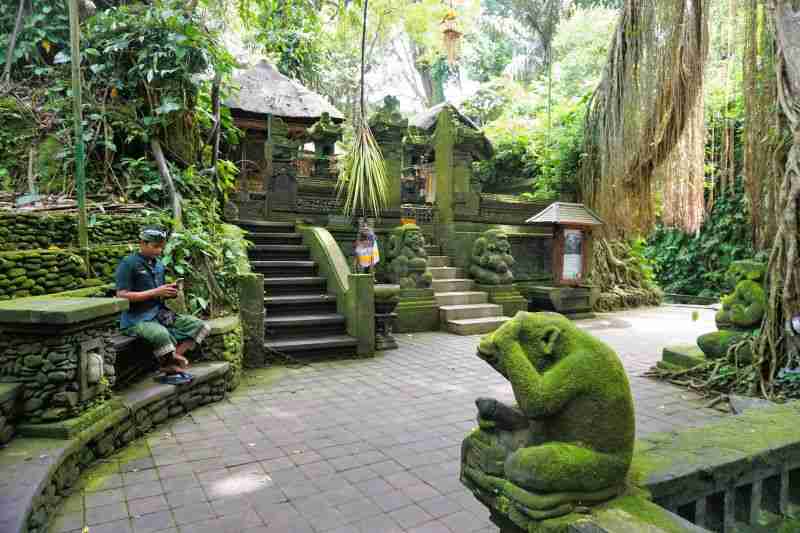
Pura Beji Temple
Pura Beji is a holy spring temple that lies inside the Ubud Monkey Forest. This small water temple dates back to the 14th century and sits in the valley beside a stream that passes through the lush green foliage of the forest. Near the lovely Balinese temple, there’s a small waterfall, and a pool of spring water used for cleansing and other Hindu rituals.
How to find Pura Beji Water Temple
To get there, follow the pathway through the monkey forest down into the valley towards the stream. Across the bridge, the pretty temple sits in the shade near the holy spring.
Visit the Monkey Forest on a day trip from Ubud and discover the centre of tradition and art in Bali on a private tour of Ubud and its spiritual heritage.
Pura Prajapati Temple
Pura Prajapati is a small, 14th-century Hindu temple also located within the Ubud Monkey forest. This temple is a Crematorium, a place where cleansing rituals for the dead take place and people mourn their loved ones. Long-tailed macaques are often seen in and around the Balinese temple.
How to find Prajapati temple
As you’re leaving the Monkey Forest you’ll come across Pura Prajapati just before you reach the exit to Monkey Forest Road.
TIP: Can’t decide whether Ubud or Kuta is the best place to stay in Bali? This comparison guide will help you to choose which of these two popular Bali destinations is better.
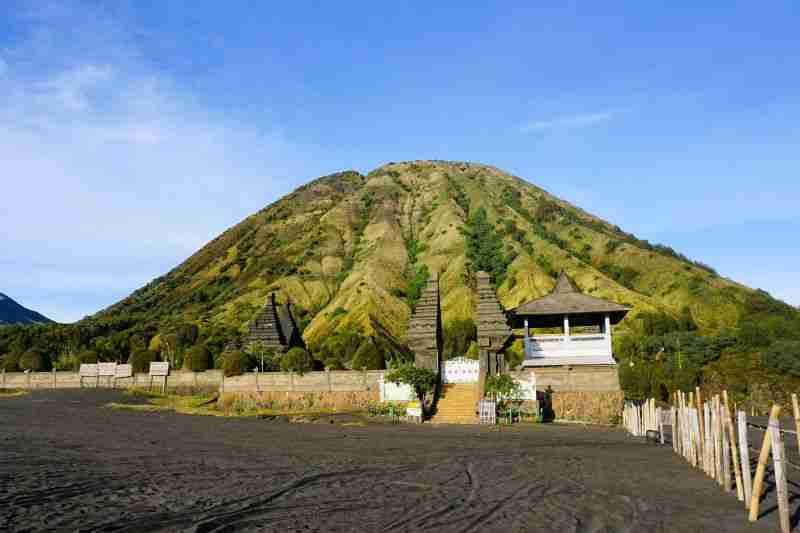
Pura Luhur Poten Temple
Pura Luhur Poten lies on the sand plains at the top of Mount Bromo in Eastern Java. This small Hindu temple sits at the very edge of an active volcano. Built on the slopes of the Bromo volcano, this temple has great importance for local villages like Cemorolewang.
Poten temple is a pilgrimage site for the local Hindus and is dedicated to appeasing the anger of the mountain god. As the volcano rumbles away sending smoke and plumes of gas into the sky, the local people offer prayers and gifts of food to keep their families and villages safe.
Ratu Boko Palace & Pembakaran Temple
Ratu Boko is an archaeological site that contains the ruins of a Palace and it’s also a Hindu religious site that dates back to the 9th century. Located in Central Java, the Ratu Boko ruins contain remnants of the Pembakaran Temple that lies within the palace grounds.
Once the Central Court of the Mataram Dynasty, the Ratu Boko Complex overlooks the famous Prambanan temples of Indonesia in the valley below. There are sweeping views from the hilltop ruins and you can wander through the archeological site and enjoy the lovely palace grounds and the tranquillity of the gardens.
The ruins of the Pembakaran Temple sit beside a lake fed by a natural spring. Holy water from the spring was used in ceremonies and cleansing rituals at the temple.
TIP: The Ratu Boko ruins are at their best in the late afternoon as the sun sets over the plains of Prambanan, but the gates close at 5:30 pm, just before sunset. Security is tight so you may not be able to see the sunset from the ruins.
Where is Ratu Boko?
The Ratu Boko ruins are located about 3 kilometres south of the Prambanan Temple complex. You’ll head out into the countryside when you visit and pass through rice fields and villages and along windy country roads to get there. Grab and Gojek taxis operate in the area.
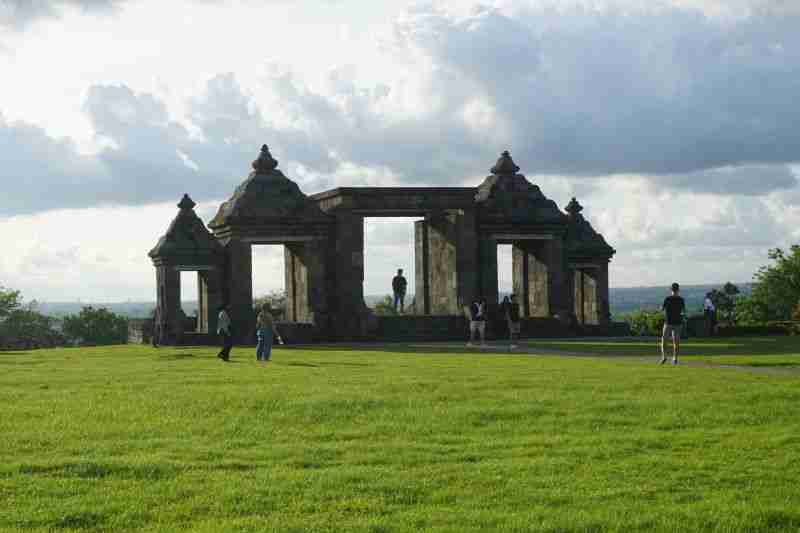
Final Thoughts
The Temples of Indonesia are lovely to visit and these are just a few of the most famous and the most scenic and the most popular. But which is the best? Well, that’s open for debate. Share your thoughts in the comments below.
You might also enjoy
Visiting Spectacular Mount Bromo in Indonesia
3 days in Ubud Itinerary for Fun & Relaxation
Is January a Good Time to go to Bali?
Is July a Good Time to Go to Bali?
Is June a Good Time to Go to Bali?
Is Lempuyang Temple worth visiting in Bali?
Ubud vs Kuta – Which is Best in 2024
A Guide for Successful Solo Travelling to Bali
Why Angkor Wat in Cambodia is so Special
The Beautiful Temples of Bagan in Myanmar
Golden Rock in Myanmar – My Amazing Solo Travel Adventure
Why You’ll Love Old Sukhothai in Thailand
5 Reasons to Visit Picturesque Westlake in China
If you enjoyed this post why not pin it & save it for later?




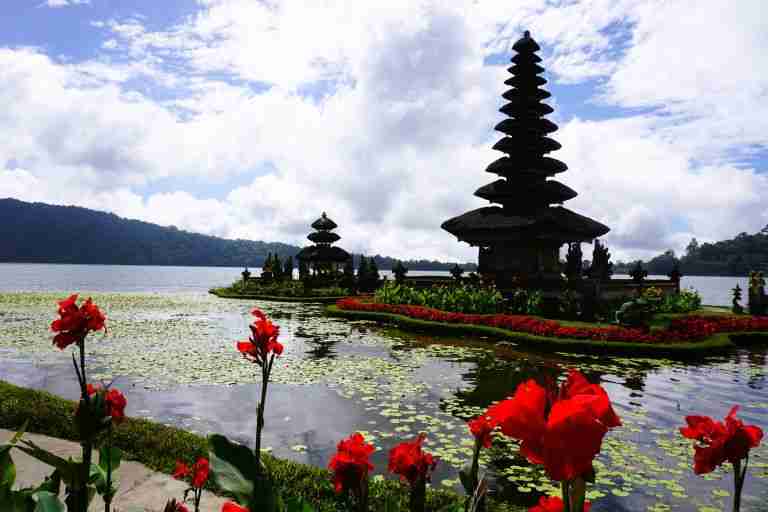
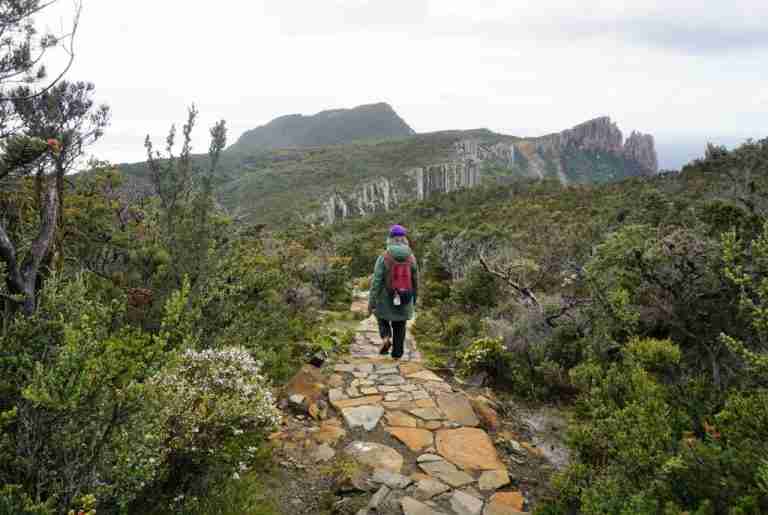
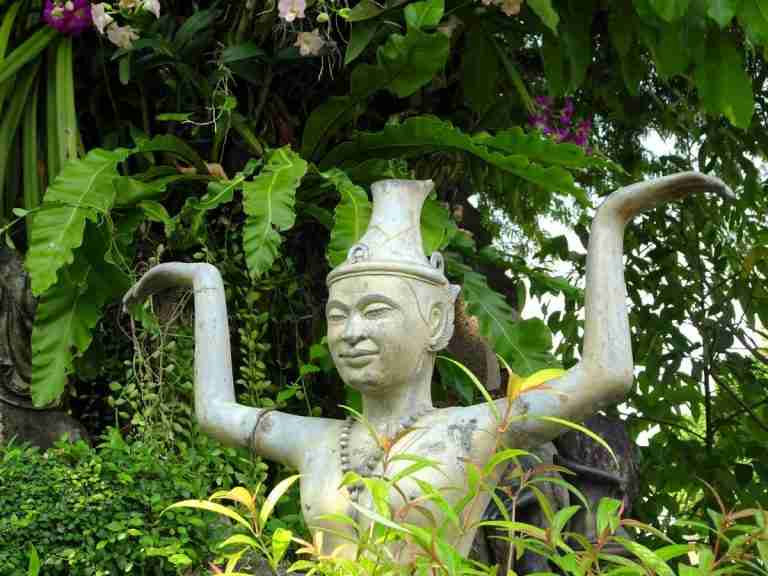
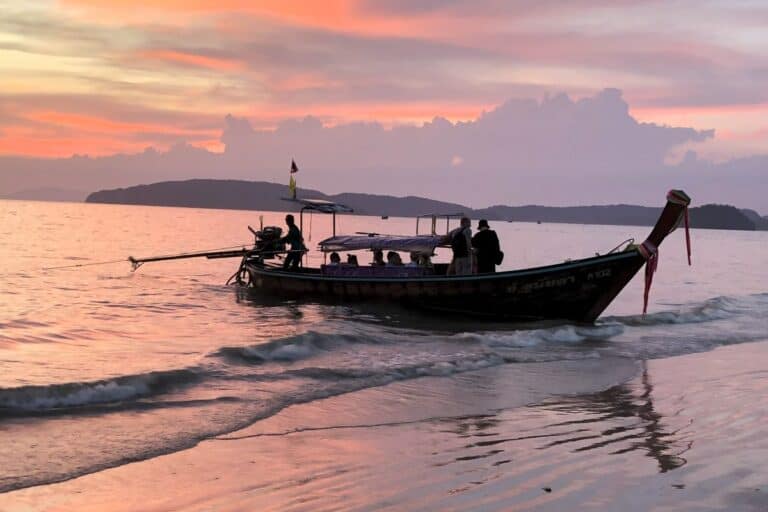
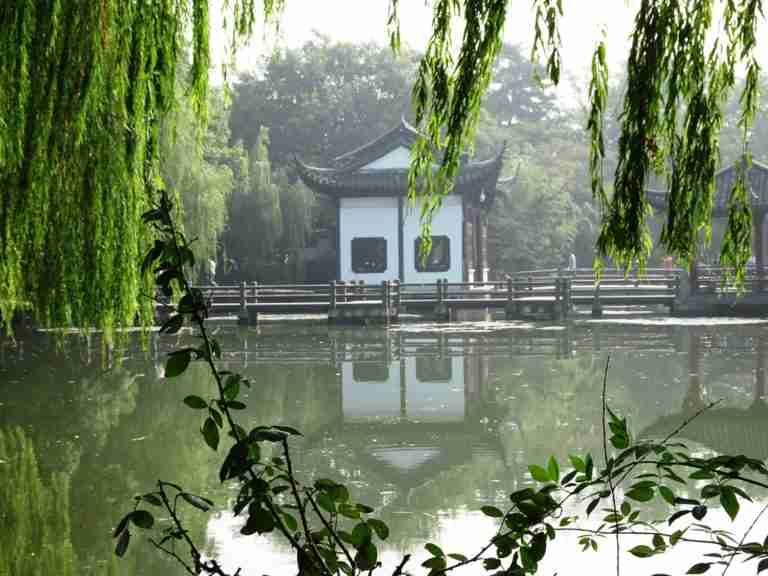
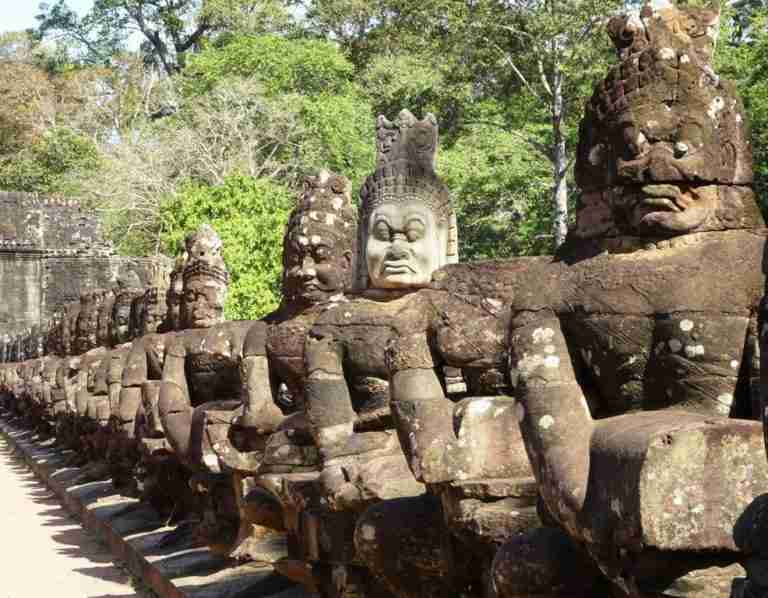
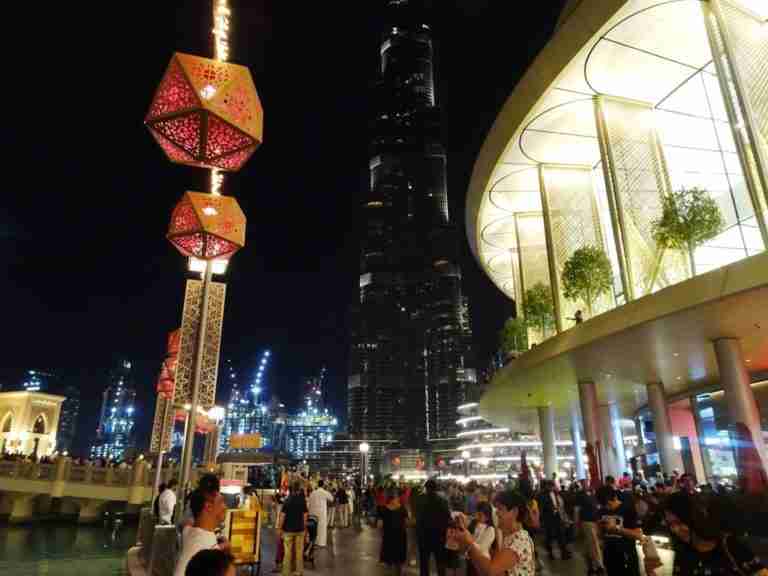
What a comprehensive post. I’ve never been to Indonesia but you make it look so very appealling. Thank you for all the practical and cultural tips.
Indonesia is high on my wish list and even more since reading your post. I’ve marked some of the temples and pinned it for when I can visit. Thanks for the inspiration!
Wow, these places are so beautiful! Not just the temples, but even the places they are located! I really want to visit this part of the world some day!